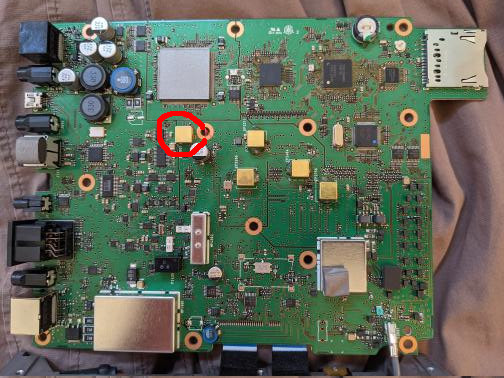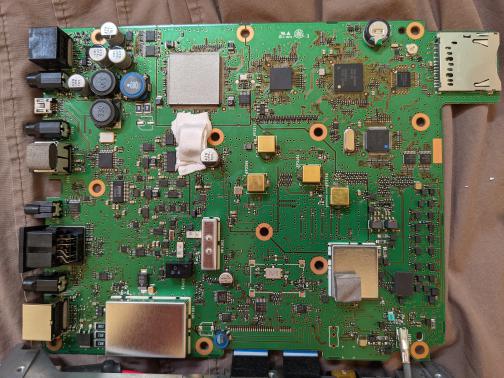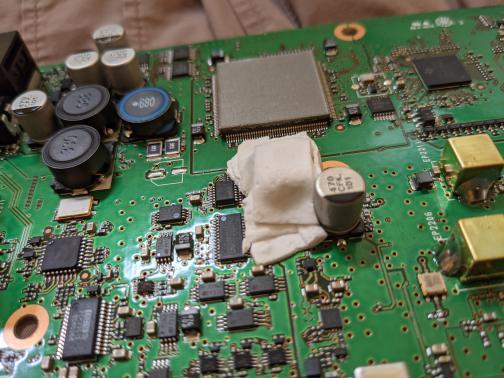The Icom IC-7100 is a compact 160m-70cm transceiver, but has some serious issues as I found out: unstable TCXO, and lack of overvoltage protection. These issues are addressed below.
As delivered, the popular and compact Icom IC-7100 is very drifty making it unusable for 70cm WSPR, even at 0% power (about 1.7W).
By contrast, an ancient FT817 with a TCXO is incredibly stable even though they both have 0.5ppm TCXOs (unless you have a very old FT817... but you can buy a TCXO for about $8 on amazon which is a plug-in replacement). More on this Icom misdesign below...
Thinking it was a temperature issue (the fan stupidly turns on even when set to 0% power causing temperature drift), I decided to try covering the TCXO with aerogel tape to isolate it from temperature changes.
Aerogel is an incredibly good insulator; google it and be amazed. In its pure form it has been nicknamed "solid smoke". The tape form feels more or less like marshmallow and can be cut to shape and smooshed in anywhere you want. I had previously used it to improve the already good FT-817 TCXO performance to zero drift results. The idea is that the heat buildup from the finals transmitting will affect the TCXO slowly enough that it will not matter during one WSPR two-minute transmission.
To do this, you have to disassemble the 7100 main unit, open the bottom, unscrew the main board, and flip it over. Then you will find the TCXO. It's in a box, stupidly right next to a heat sink pylon (that's the screw hole you see below) so that PA heat will screw up the TCXO. As will the fan that goes on even at low power, with the ducting arranged so it streams right over the TCXO. There seem to be some dimbulbs at Icom who are unaware of thermal design, which is too bad given how incredibly good the IC-735 was in this regard (I still have one).
You can see the yellow TCXO box below circled in red to near the large grey IC. Click any of the below images for a bigger version. You can typically click again for a ridiculous zoom.

Now here it is covered in aerogel tape. The tape in this format feels more or less like marshmallow and can be cut to shape and smooshed in anywhere you want. I used it to significantly improve the already good FT-817 TCXO performance; I get zero drift on 70cm WSPR at low power with it. Yes, zero drift on 70cm with the venerable FT-817.

Again, from the side

Unfortunately this mod did not seem to help much. I suspect the huge ground plane running into it is pushing in the heat, via the heat sink pylon right next to it.
Icom also made zero attempts to regulate the 3.3V controlling this TCXO so it is likely moving around during transmit as well. The 3.3V feed is just through a ferrite bead with no attempts at stabilizing it beyond a capacitor. Remember, the far cheaper FT-817 has zero drift on 70cm at a similar power level on WSPR so what's going on here? This brand-new (2021) IC-7100 will not produce decodable WSPR frames on 70cm even at 0% power due to excessive drift, while at 25 year old Yaesu FT-817 does. Not even 6m is usable. Hmmm.
Movie showing view around the aerogelled boxFlame on:
If you have an IC-7100, expected it to get destroyed from any glitch
A engineering idiocy from Icom is that the incoming 13.8VDC has absolutely no overvoltage protection. They run it directly into a 3.3V DC-DC IC converter (IC1001, TPS62110RSAR). This means that any power supply glitch completely destroys your radio, even if it is turned OFF since that converter is always live so that the MCU can detect the power switch being pressed.
Yes, this tiny little DC converter is exposed to the 13.8V power you plug in with no reasonable protection whatsoever. Think about that when you plug it in. Tiny grain sized chips directly on the noisy raw DC power from your boat or car.
I had this happen to a five-month old IC-7100 and Icom basically told me to FOAD; they would not fix or replace it despite their design flaw. The 7100 in question had been turned off for a week at the time; I have no idea what happened in the meanwhile, but an FT-817 and a Navico chartplotter were all connected to the same power supply during all this time and they were both fine -- both were ON fulltime that week. The IC-7100 was the only unit that inexplicably failed sitting there doing nothing.
There was also a 12V SLA battery floating the output of the Alinco DM-330MV power supply all this time. I like to keep a battery there as a buffer and backup.
So according to Icom, an Alinco DM-330MV 13.8V power supply paralleled to a battery can destroy a brand new IC-7100 when the mood strikes and that's just too bad for you.
Another friend of mine had his IC-705 charging circuit fail after plugging it into his car and Icom refused to fix it saying it was one week out of warranty, even though it took a month from the purchase to delivery and the failure happened a month before it was returned to the store. That's how Icom works I guess.
Please note, I have been involved in hardware design for decades and it's totally understandable having no protection for the 13.8 going to the finals for power reasons: it's just very hard to deal with. But for the logic board with its modest and predictable demands you MUST protect the incoming "13.8 Nominal" voltage from going beyond the specs of your little DC-DC buck converters. This is really simple stuff. In my previous job we made Marine systems that would work from 8V to 50V just by protecting the input like this.
In short, I will never buy another Icom product:
73 ve3rph